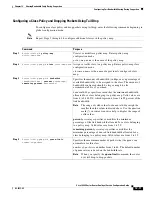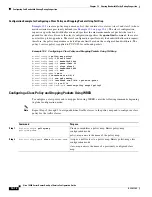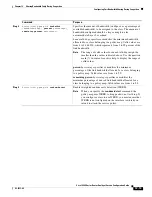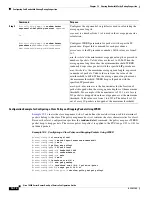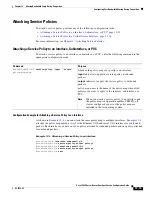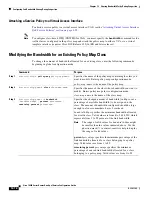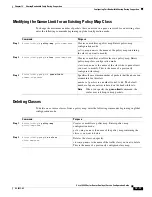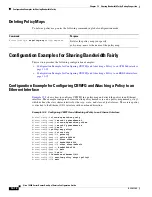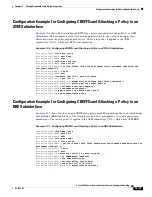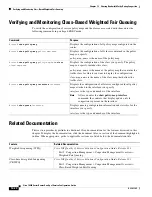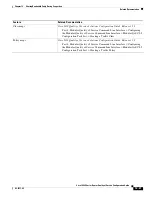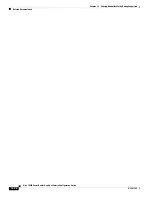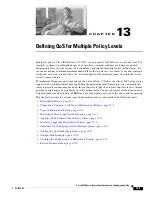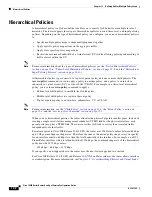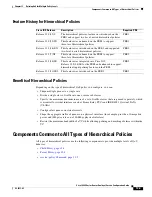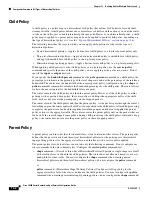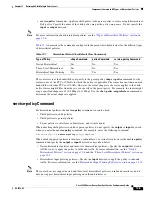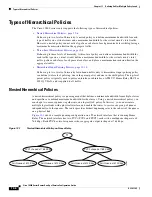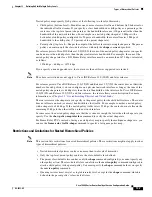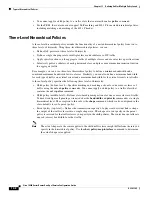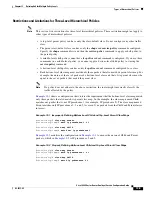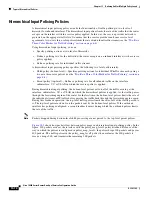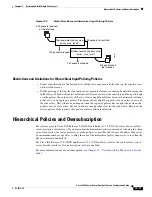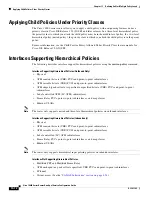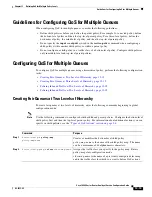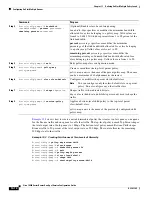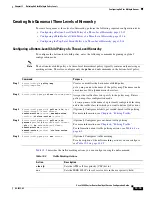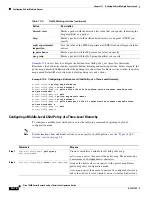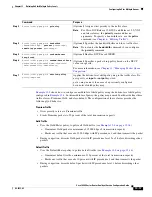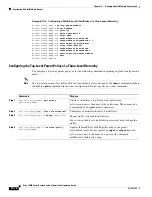
13-3
Cisco 10000 Series Router Quality of Service Configuration Guide
OL-7433-09
Chapter 13 Defining QoS for Multiple Policy Levels
Components Common to All Types of Hierarchical Policies
Feature History for Hierarchical Policies
Benefits of Hierarchical Policies
Depending on the type of hierarchical QoS policy you configure, you can:
•
Shape multiple queues to a single rate
•
Divide a single class of traffic into one or more subclasses
•
Specify the maximum transmission rate of a set of traffic classes that are queued separately, which
is essential for virtual interfaces such as Frame Relay PVCs and IEEE 802.1Q virtual LANs
(VLANs)
•
Configure fair queues on virtual circuits
•
Shape the aggregate traffic of queues on a physical interface (for example, provide a 10-megabits
per second (Mbps) service on a 100-Mbps physical interface)
•
Restrict the maximum bandwidth of a VC while allowing policing and marking of classes within the
VC
Components Common to All Types of Hierarchical Policies
All types of hierarchical policies use the following components to provide multiple levels of QoS
behavior:
•
Child Policy, page 13-4
•
Parent Policy, page 13-4
•
service-policy Command, page 13-5
Cisco IOS Release
Description
Required PRE
Release 12.0(22)S
The hierarchical policies feature was introduced on the
PRE1 and support two-level, nested hierarchical policies.
PRE1
Release 12.0(25)SX
This feature was enhanced on the PRE1 to support
three-level hierarchical policies.
PRE1
Release 12.2(16)BX
This feature was introduced on the PRE2 and supported
two-level, nested hierarchical policies.
PRE2
Release 12.3(7)XI
This feature was enhanced on the PRE2 to support
three-level hierarchical policies.
PRE2
Release 12.2(28)SB
This feature was integrated into Cisco IOS
Release 12.2(28)SB for the PRE2 and enhanced to support
hierarchical input policing feature on the PRE2.
PRE2
Release 12.2(31)SB2
This feature was introduced on the PRE3
PRE3

